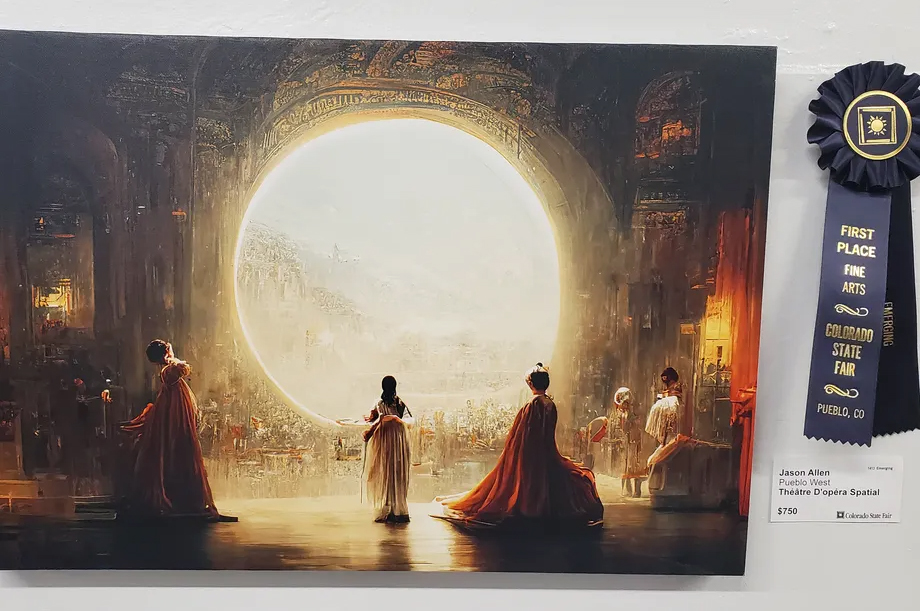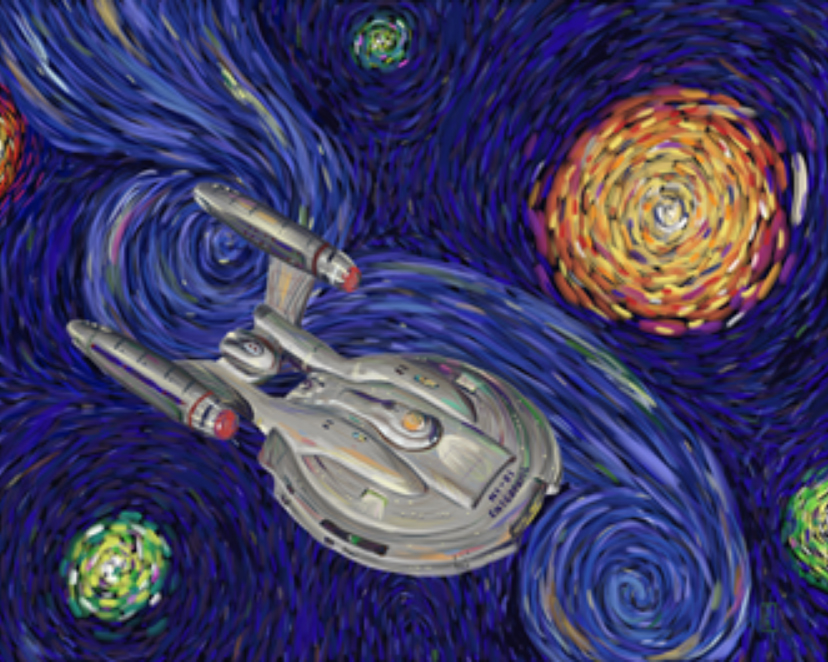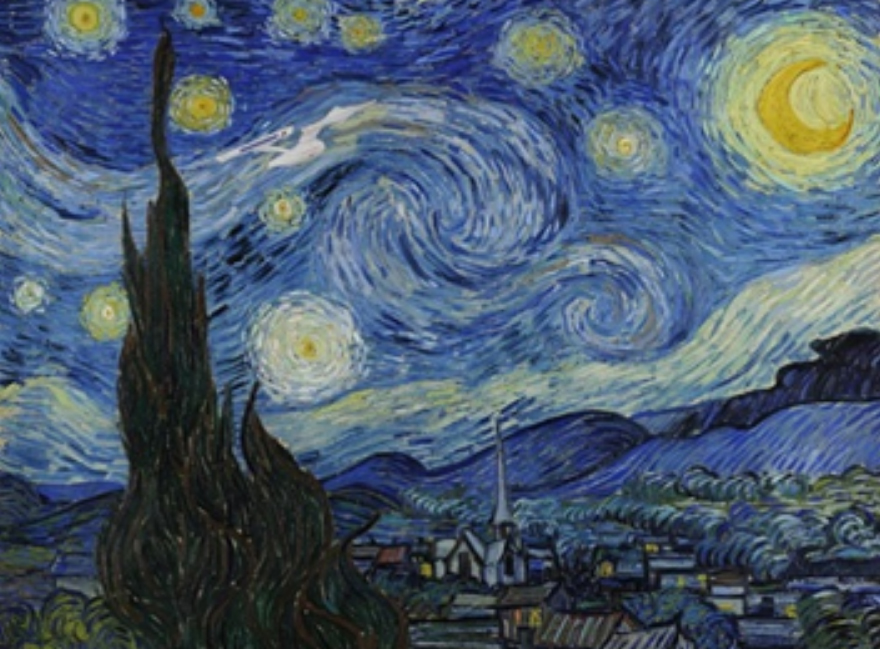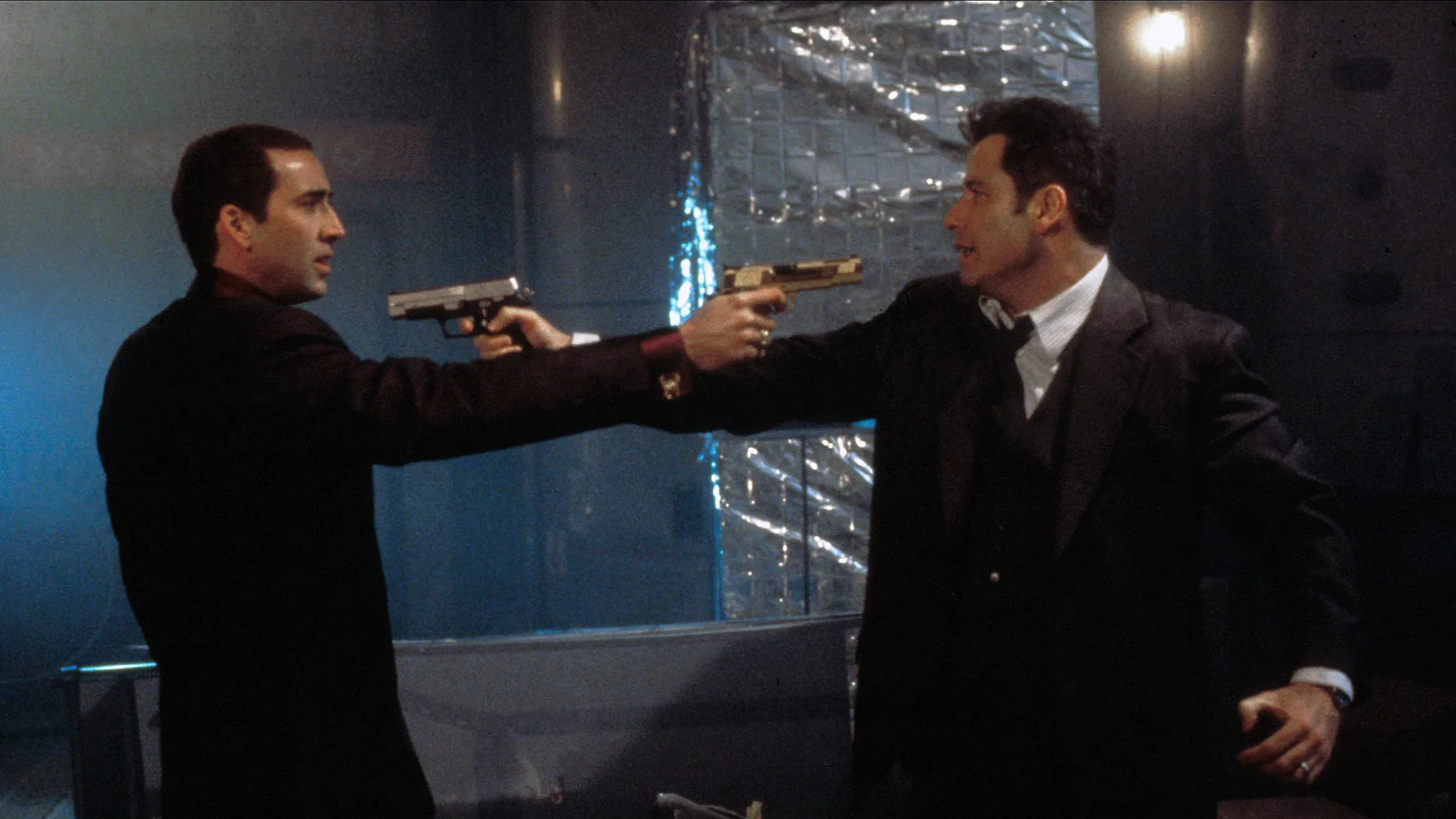[ad_1]
Four years ago, in this post, I shared three of the most terrifying, bone-chilling, scary Halloween stories – stories about copyrights that refused to die, about ghost killer Michael Jackson, and a pink Copyright Scorpion who hunts and kills criminals. . Four years later, and I’ve received a new batch of news that’s more terrifying than ever. You can cancel the clinic this year – copyright liability seems more terrifying than anything crawling in the dark. This time, we’re talking about copyright law related to AI art, deep human eyes, and more!
Night of the Living Robot: When an AI Student Becomes a Master (Art).
We like to think that humans are at the top of the food chain – nothing on earth can match our knowledge, talents and abilities. But human rights are a thing of the past. A few weeks ago, the artwork created by AI took first place at the Colorado State Fair art competition, beating 20 lesser humans in the process. The AI victory is amazing, because not a single pixel was created by humans.
The works of art were created over many years, most of which are unknown. In recent months, AI projects seem to have gained new respect, both legally and artistically. For example, in 2018, Stephen Thaler (who you may remember as the creator of the patent search bot) sought copyright registration for an AI-generated work of art, entitled. A Recent Entry to Paradise. The work was created by an AI that aims to generate “perspectives about the near-death experience that have been determined.” Copyright registration was denied, as only the work of a human author is eligible for copyright.
This year, however, the Copyright Office offer registration for a graphic novel whose illustrations are all done with AI-generated art. The main difference between the two scenarios is Thaler’s case, where the application listed the AI system as the author of the work, but the graphic novel was written by a human, with the help of AI. However, in practice, that distinction is not very important. Under copyright law, it is not necessary for a copyrighted work to be valid. As one judge explained, all that is required is a “scintilla of creativity”.

Theater D’opéra SpaceJason Allen
This means that people can get copyright registration for actions where the robot is responsible for 99% of the creation, if the remaining 1% (for example, adding color, adding a small bird) it contains what is needed. “scintillation.” So from a legal point of view – at least for now – AI systems have been deemed incapable of performing innovative tasks. In other words, if only 1% of the works are registered human contributions, the remaining 99% are freely available for use.
With that said, it shouldn’t be too difficult to find the creative contribution that AI supporters need. The most popular AI tasks are created by trial and error using built-in prompts. For example, Jason Allen, winner of the Colorado State Fair, spent 80 hours creating the artwork he used to produce the art and tried 900 different prompts before making a decision. at the shop. Given the power of AI artists, one can argue that the selection and refinement of prompts (as they are used today) is a major creative process, similar to setting up a camera. , or making pictures. And since a person’s immediate choice reflects the structure of the entire work, there is no way to analyze the creative and non-creative elements of the work.
The existence of AI picture creation raises a question: What if someone uses AI to copy an artist’s picture. style? For example, what if AI could draw a portrait in the style of Picasso or a landscape in the style of Van Gogh? Do such matches violate any copyrights? Apparently, they don’t like it – the AI (or the person who directs the AI) escapes scot-free. Copyright only protects the individual work, not the forms and methods used to create that work.
This is why Weird Al couldn’t stop others from making polka music and why the Backstreet Boys couldn’t stop One Direction from making pop music. Accordingly, if a particular form of work is included in a work, then the copyright owner can claim that works depicting that type of work are illegal copies. If such a claim is successful the original work must be compared with the claimed copy. If the actions are “exactly similar”, then the AI copycat will find itself in hot water – that’s true if the AI is taught to imitate or copy the features of the underlying action.

This style copies Van Gogh’s style but doesn’t seem to copy any aspects of Van Gogh’s work, so it might be okay.

This is just a copy of Starry Night which adds the enterprise above. This condition violates (if Starry Night not in public domain).
The consequences are clear: Even if robots are stronger, faster, smarter, and more artistic than us humans, we will always be masters of copyright law. Right or wrong, AI doesn’t always succeed at the copyright office. If nothing else, at least our copyright registrations will be secure when the Transition begins.
The uncertainty, It is unstoppable, GUARANTEED Copyright Application
We all live in fear of the unkillable monster – the unstoppable horror. Intellectual property lawyers know this monster well — we call it Copyright Law. Every 35 years, like clockwork, copyrights that have been driven home by their owners return to a new crisis. This is because copyright holders are not allowed to sell their copyrights forever. By law, copyrights are assigned and transferred to another person and revert to the owner 35 years later.
The victim of this copyright scare Top Gun: Maverick. Paramount secured the rights to Top Shot in 1986. Thirty-five years later, those rights reverted to the owner of the land. Although he did not own the rights, Paramount developed and released it Maverick and has since been sued for copyright infringement. Similar problems arose for the horror film Friday the 13th.
What can be done to prevent these changes? The answer is simple and scary: nothing. There is no end to the Return of Copyright. All you can do is hunt around, keep each child, and compare yourself to the ghost hunting fees you’ll have to pay to prevent ownership for another 35 years.

The attack of the Eye-bearers
One of the greatest horror movie themes of all time is On/Offa film in which the two main characters undergo surgery to change their eyes. On/Off was released in 1997 as a high science fiction action film. Today, however, there has been a facelift. What’s more, face-changing can happen instantly — without the subject’s knowledge or consent. Don’t believe me? Just ask Bruce Willis. Last month, the website “Deepcake” announced that they had teamed up with Bruce Willis to create a “clone” of Bruce Willis’ face. This came as a surprise to Bruce Willis, who never sold his face to anyone – which led to the humorous but true saying, “Bruce Willis won’t sell power to his face.”
So what can we do to stop the thousands of virtual classes? The law can help. The right of publicity gives each person the right to control or limit the use of their image. The details vary from state to state, but most states have laws that make it illegal to use a person’s likeness for commercial purposes without permission. Although advertising laws vary, (For example, slander and satire of celebrities and politicians are legitimate acts of speech.) They can still serve as a powerful tool against facelifters. On the other hand, the law does not apply to natural doppelgangers – but we take what we can.
The most terrifying Finale of them all
There are good reasons to fear copyrights. They have a long history (70 years, including the life of the author), insatiable returns, and great damages. (The fines for copyright infringement can be up to $150,000 per work.) So it’s safe to say that when copyright gets bigger than us, it can’t be held at bay, and it comes with a lot. of risk and financial loss.
But one man’s monster is another man’s savior. For authors and creators, the “intimidating” aspects of copyright act as a beacon to protect against theft and corporate greed, and to protect against those who would steal, profit, and exploit creativity. As with most horror stories, the person who first appears to be the villain may save the day. It all depends on what you want to say. What a trip you choice?
[ad_2]
Source link
